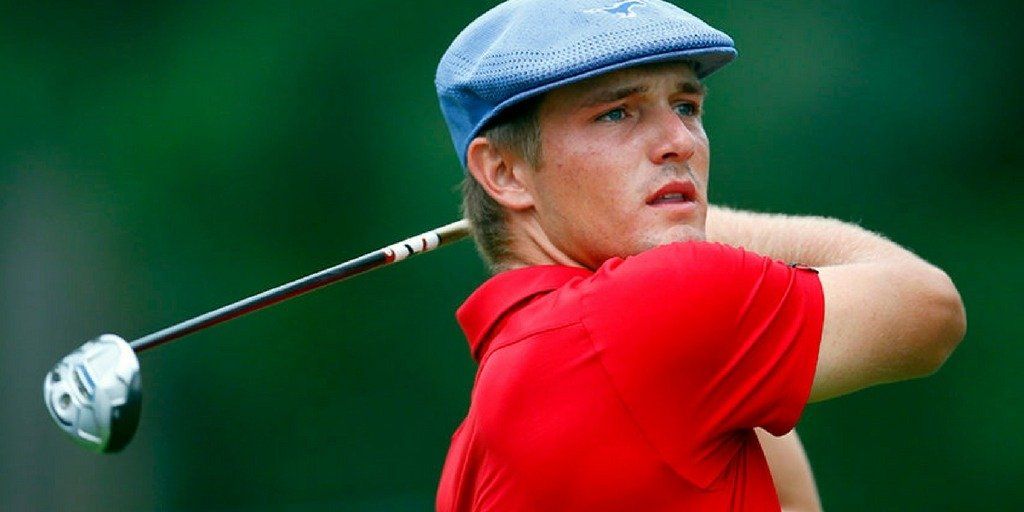
You may or may not have heard of single length irons, but they are slowly becoming an interesting topic in the golf club industry. They are gaining popularity because of a familiar phenomenon that occurs when recreational golfers want to play with what the pros have in their bags.
Golfers love clubs, and they certainly love keeping tabs of what is going on in the professional ranks in terms of which players are playing certain brands. Like clockwork, each time someone wins a PGA event, someone is posting pictures on Twitter of WITB minutes later.

This always confused me. I get the curiosity overall, but what does it matter to a 20-handicap golfer what driver configuration Dustin Johnson is using? It’s custom fit to his 125+ mph swing, and there are absolutely zero parallels that 99.9% of the golf world can take from what pros play.
There’s certainly nothing wrong with admiring what’s in their bags though. They’ve got some nice stuff.
There is a recent equipment story that is interesting, and it has to do with the 2015 U.S. Amateur champion Bryson DeChambeau. You’ve probably heard of him at this point because he’s done extremely well in the majors and has an extremely unique personality that blends a love for Physics and golf. But his short professional career has sparked a lot of interest in the clubs he plays.
His irons are all the exact same length.
When I first heard about this after he won the NCAA individual championship, my reaction was, “why the heck would anyone want irons the same length?”
Bryson worked with a boutique club manufacturer Edel, out of Texas, to perfect a set of irons that helped make him the top-ranked amateur in the world. It had been the first time in a few decades anyone had really heard about single length irons, and it started to revive the belief that they could help golfers.
So I spoke to my friends at Pete’s Golf. They are recognized as some of the best club fitters out there, and actually have experience fitting another professional golfer with single length irons.
When I first asked Woody Lashen, the co-owner of Pete’s Golf, about what it takes to fit someone for single length irons, his response was this:
“I’ve had a few golfers come in asking about getting single length irons, and I tell them if they want me to do it they have to write me a check for 10 thousand dollars as a retainer. If there’s anything left at the end we will give it back.”
Before we get into why it would take such an extreme amount of money to build a set of single length irons properly, let’s first understand the theory behind this equipment.
Why Would You Play Single Length Irons?
In theory, there’s a few reasons why playing single length irons work:
- Having a shorter shaft on lower-lofted irons will make them easier to hit
- You can make the same exact swing on every shot
- Golfers wouldn’t have to change ball position or alter anything between shots
Personally I don’t believe I make different swings on any of my irons, or alter my ball positions. But some of you reading this might feel that way, which is why single length irons have gotten a lot of interest lately.
It’s actually not a new concept.
Back in the 80s Tommy Armour designed a set of single length irons but they failed pretty quickly. Golfers struggled with hitting the higher-lofted irons too high and their lower-lofted irons too low.
Woody believed they were too ahead of their time because they didn’t have the technology back then to move center of gravity, test ball flight, and adjust the lofts and lie angles accordingly.
So the concept remained mostly dormant until a college kid with a penchant for Physics decided to adopt Homer Kelly's complicated, science-based swing system from his book The Golf Machine. Bryson had a theory that having irons the same length would help him perfect it.
His results were staggering, so like anything in the golf world people assumed that if it worked for him that it could work for others.
The Reality of Getting Fit
Woody Lashen and Pete’s Golf actually have developed quite a bit of experience building single length irons with another professional golfer, but you probably have never heard of him.
Matt Dobyns is the head teaching professional at Fresh Meadow Country Club in Lake Success, NY. He has an interesting side gig that makes him a bit unique. He plays part time on the PGA Tour.
Matt has established himself as one of the top players amongst the PGA teaching ranks, and at the age of 37 his playing career seems to be flourishing. He has made cuts in three consecutive starts on the PGA Tour including the prestigious Wells Fargo Championship played on the brutal layout of Quail Hollow.
Not bad for a guy who plays competitive golf on the side.
Before his recent success he did a deep analysis of his statistics to see what was holding him back from performing better on tour. In almost every category he was in the top 25% except one where he was dead last – proximity to the hole from 150-200 yards.
Matt was almost double the length of the PGA Tour average from this distance, which can cost a player serious strokes and prevent them from succeeding at the highest levels. Anyone who is playing well on Tour certainly has their strengths, but the players who make cuts every week really don’t have any glaring weaknesses relative to their competition.
So Matt started working with the staff at Pete’s to build a set of single length irons because he felt it could help his ball striking with longer shots.
It took a lot of time. We’re talking hundreds of hours.
Endless Variables
The main issue with building a set of single length irons is controlling all of the variables that go into building a set of clubs fit to a golfer’s specific swing.
The first step is to determine the actual length of the shaft you are going to use for the set. Is it going to be a 6-iron length, 7-iron length, or an 8-iron length? Maybe even 9-iron length! Then based on the length you are going to have to determine the lie angle for each club, and based on the player’s testing results they might have to adjust the lofts and center of gravity.
Listening to what they went through to get Matt’s set right, it seems like a huge can of worms.
The main issue with fitting a golfer for these kinds of irons according to Woody is that you’re going into “uncharted territory.” There’s no real true system for single length irons, and fitting Matt Dobyns proved that.
Master club builder Mr. Ohno built numerous prototypes for Matt, and spent hours tweaking each club after he had tested it on the launch monitor and out on the course. He also said that because Matt is a world-class ball striker this process was actually much easier than if they had done it with a 20 handicap because his swing was so repeatable, and they could tell pretty quickly if each prototype was going to work or not.
Bryson DeChambeau went through that same process with Edel, and is currently going through it with his new sponsor Cobra.
To put it mildly, it requires a lot of tinkering.
It Actually Worked Though
When they finally did get Matt Dobyn’s irons right (they ended up using two lengths for his entire iron set), you can’t argue with the results. He has made his last three cuts on tour, and qualified to play in the PGA Championship at Baltusrol.
Most importantly he improved his performance from 150-200 yards dramatically.
So while it took hundreds of hours and a mangled looking set of irons, this process did work for Matt’s game.
But Matt is not like most golfers who are reading this article. He can hit drives 340 yards and has tremendous club head speed, so he has no issue getting the ball in the air with his 4, 5, or 6-iron.
In Woody’s opinion, that could be one of the major hurdles for recreational golfers playing single length irons. They might not have the club head speed necessary to generate enough height with the lower-lofted irons.
Is it Going to Catch on?
In order for single length irons to become a “thing” in the golf industry, some of the major manufacturers would have to get behind the concept. They would need to develop a system to make sure players get fit properly, and then spend tons of marketing dollars convincing the golfing public to buy these clubs.
Based on the conversation I had with Woody Lashen I think that idea sounds a little far fetched. It will take tons of research and development to control all of the variables that come into play when building a set of single length irons. This doesn’t seem like a concept where a player can walk into Dick’s Sport Goods and buy them off the shelves.
Never say never though.
Right now there is one company offering single length irons. Wishon Golf has developed the Sterling Irons. There isn’t a peep from Titleist, Taylor Made, Cobra, Callaway, or any of the other major companies.
My guess is that their engineering staffs will hope it stays that way.
Woody actually believes if done properly a set of single length irons could be tremendous for beginner golfers because they could learn the game with the same exact swing on every shot.
As mentioned earlier though, it’s controlling all of the variables that arise when building a set that becomes the main challenge. It is a time consuming process to get it done right, and it’s unclear whether or not a true system could be built to cut down on that time and cost.
We’ll have to wait and see.
We care about the protection of your data Read our Privacy Policy